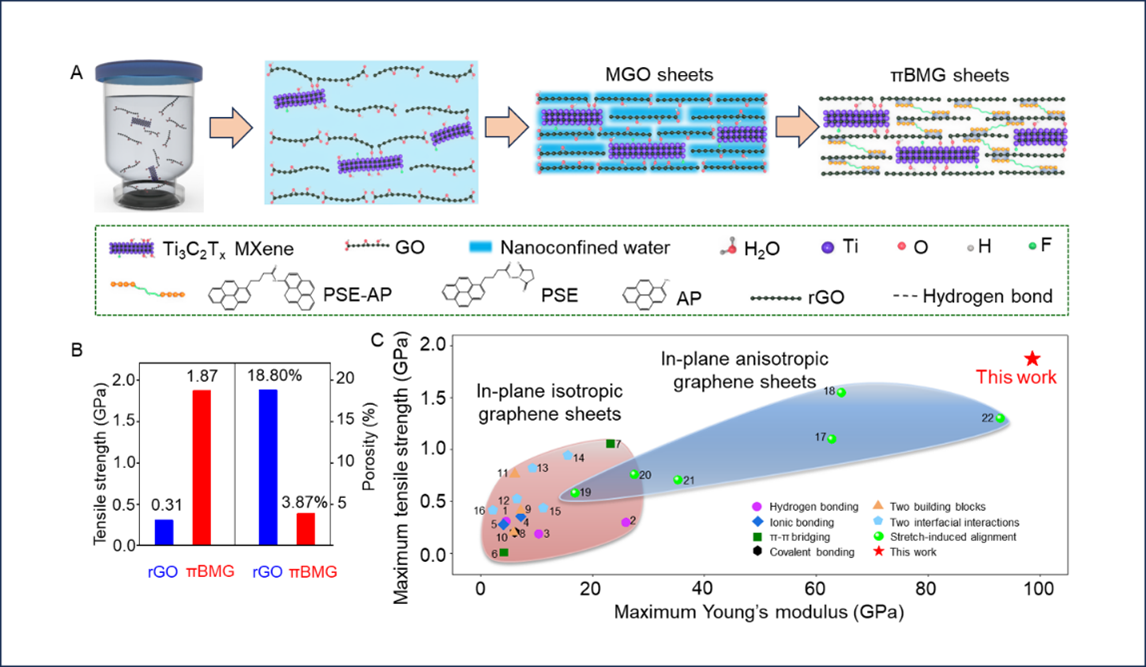On February 16, 2024, Prof. Cheng Qunfeng's team at Suzhou Institute for Advanced Research (SIAR), University of Science and Technology of China (USTC) published their progress in the field of biomimetic nanocomposites entitled "Water-induced strong isotropic MXene-bridged graphene sheets for electrochemical energy storage" in Science [Science 2024, 383, 771].
Note: High-performance titanium carbide cross-linked graphene nanocomposites. (A) Preparation process, (B) mechanical properties and porosity, and (C) comparison of mechanical properties

On October 1, 2023, the Ministry of Industry and Information Technology, the Ministry of Science and Technology, the Ministry of Finance, and the Civil Aviation Administration of China jointly issued Green Aviation Manufacturing Industry Development Program (2023-2035), an inevitable requirement for tackling climate change and achieving sustainable development of the aviation industry. Over 50% of China's C929 wide-body aircraft will be made from composite materials, similar to Airbus A350 and Boeing 787, in a bid to reduce weight and save energy. 2D nanomaterials such as graphene and titanium carbide (Ti3C2Tx) are ideal green aviation materials to replace carbon fiber due to better mechanical and electrical properties. However, how to realize their intrinsic properties in macroscopic assemblies is a crucial scientific issue to be solved.
The team has long been working on biomimetic nanocomposites and has made an impressive record of achievement. By learning from nature, they developed a green biomimetic construction strategy for nanocomposites, invented ordered chemical cross-linking and its synergistic action strategy, and created lightweight high-strength conductive and functional nanocomposites. Recently, Prof. Cheng proposed a nanoconfined assembly strategy to assist 2D nanomaterials assembly through nanoconfined water. It eliminates the folding of 2D nanomaterials due to capillary shrinkage, addresses structural non-densification and low orientation caused by wet-chemical assembly, and makes a breakthrough in mechanical properties of in-plane isotropic nanocomposites. Its tensile strength could go as high as 1.87 GPa, and Young's modulus as 98.7 GPa, higher than the figures of other graphene films prepared at room temperature reported in the current literature. Moreover, this strategy is a kind of green and low-carbon manufacturing, effectively reducing energy consumption for the fabrication of high-performance nanocomposites. The fabricated nanocomposites show better electrochemical properties than other graphene-based electrode materials.
Link: https://www.science.org/doi/10.1126/science.adj3549
Correspondence should be addressed to SIAR, USTC.
(School of Nanoscience and Technology, Department of Science and Research)
SIAR's Progress in Bionic Nanocomposites
Publish Date:2024-02-16
Views:1669